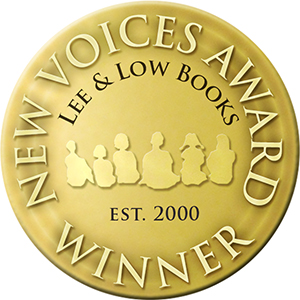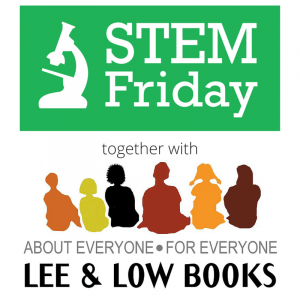2016 Chinese New Year is Monday, February 8th and it’s the year of the Monkey. How can you celebrate with students? Continue reading
Tag Archives: children’s books
How to Create a Schoolwide Program to Celebrate Student Writing and Heritage
Want to inspire future poets, writers, and dreamers? One elementary school in San Francisco did just that with an author study of U.S. Poet Laureate Juan Felipe Herrera. Continue reading
Holiday Gift Recommendations: 18 Children’s Books for Every Kid On Your List
Now that December is upon us, many people start to stress about gift giving. What will they like? How can I give a great gift, but not break the bank? Never fear! LEE & LOW BOOKS is here to save the holidays! 
We’ve compiled a list of LEE & LOW titles that’ll be sure to please everyone, from the science lover to the musician!
Turn a Blanket into a Scarf! Book-Inspired DIY Projects
In Maya’s Blanket/La Manta de Maya, written by Monica Brown and illustrated by David Diaz, Maya takes an old blanket that her abuela sewed for her and turns it into many different things. Her blanket turns into a dress, then a skirt, then a rebozo, a scarf, a headband and even a bookmark! Maya teaches us that something old can be turned into a new and beautiful something else.
“¿Qué es deportar?”: Teaching from Students’ Lives
![]() We at LEE & LOW BOOKS believe that high-quality bilingual books help build a solid foundation to achieve literacy in any language while affirming and validating a child’s identity, culture, and home language. We are so excited and honored to share this one educator’s example of why books featuring characters like her students belong in her classroom and curriculum.
We at LEE & LOW BOOKS believe that high-quality bilingual books help build a solid foundation to achieve literacy in any language while affirming and validating a child’s identity, culture, and home language. We are so excited and honored to share this one educator’s example of why books featuring characters like her students belong in her classroom and curriculum.
In this guest post, Sandra L. Osorio describes using books that captured her students’ bilingual and bicultural experiences. An elementary bilingual teacher for eight years, Osorio is now an assistant professor at Illinois State University. This article originally appeared in Rethinking Schools magazine, and is cross-posted here with permission. Article is also available in Spanish from Rethinking Schools.
Book Title Mashup: Lee & Low Edition
Book title mashups are when you take two book titles, put them together and create a synopsis based on the title. We took some of our favorite Lee & Low and Tu Books titles to come up with some new and fun stories!
Shadra Strickland and Sally Derby Discuss Their New Book, Diversity in Publishing, and More
 Released this past May, Sunday Shopping tells a whimsical story of a girl and her grandma who go “shopping” through the newspaper ads every Sunday. We interviewed author Sally Derby and illustrator Shadra Strickland about their creative processes, the children’s book publishing industry, and encouraging children to write more. Continue reading
Released this past May, Sunday Shopping tells a whimsical story of a girl and her grandma who go “shopping” through the newspaper ads every Sunday. We interviewed author Sally Derby and illustrator Shadra Strickland about their creative processes, the children’s book publishing industry, and encouraging children to write more. Continue reading
New Voices Award Winners on Revising Your Story
 This year marks our sixteenth annual New Voices Award, Lee & Low’s writing contest for unpublished writers of color.
This year marks our sixteenth annual New Voices Award, Lee & Low’s writing contest for unpublished writers of color.
In this blog series, past New Voices winners gather to give advice for new writers. This month, we’re talking about one of the most important steps in writing a story: revision.
The Other Side of Quiet – An Intern’s Perspective
Kandace Coston is LEE & LOW’s summer intern. She is one of five recipients of the We Need Diverse Books Internship Program inaugural grant. She graduated from Barnard College where she majored in music and took every creative literature class possible. In her free time, Kandace pursues her other interests, which include American Sign Language, handmade jewelry, and composing cinematic adventures! Continue reading
10 Myths about Teaching STEM Books and How You Can Teach STEM in Your Classroom Now
 Join Lee & Low Books and Anastasia Suen, Founder of the STEM Friday blog and award-winning children’s book author, for a dynamic discussion on how to teach STEM in your classroom starting this fall. Share My Lesson is hosting a Summer of Learning professional development series and Thursday, July 9 focuses on all things STEM. Continue reading
Join Lee & Low Books and Anastasia Suen, Founder of the STEM Friday blog and award-winning children’s book author, for a dynamic discussion on how to teach STEM in your classroom starting this fall. Share My Lesson is hosting a Summer of Learning professional development series and Thursday, July 9 focuses on all things STEM. Continue reading


